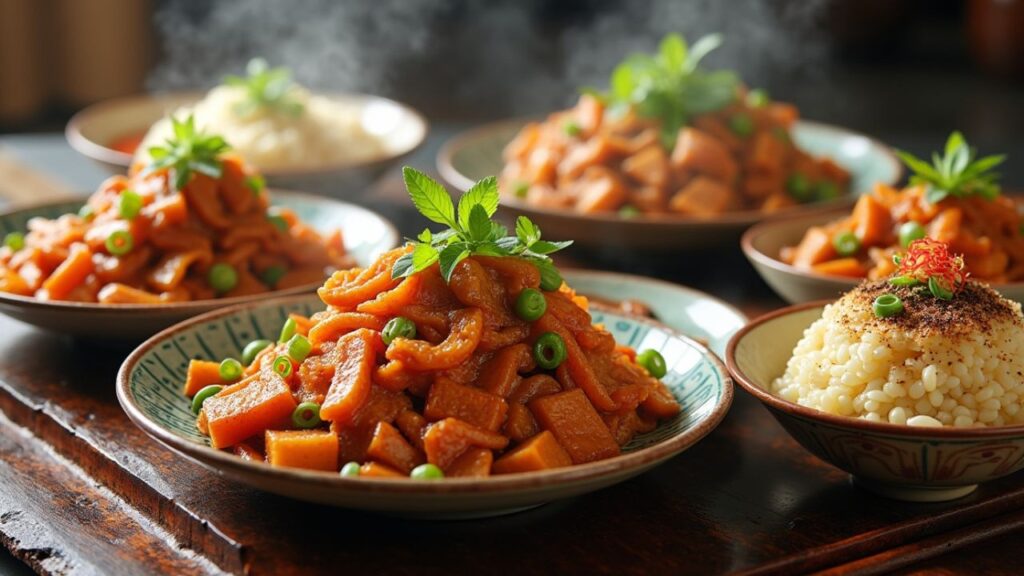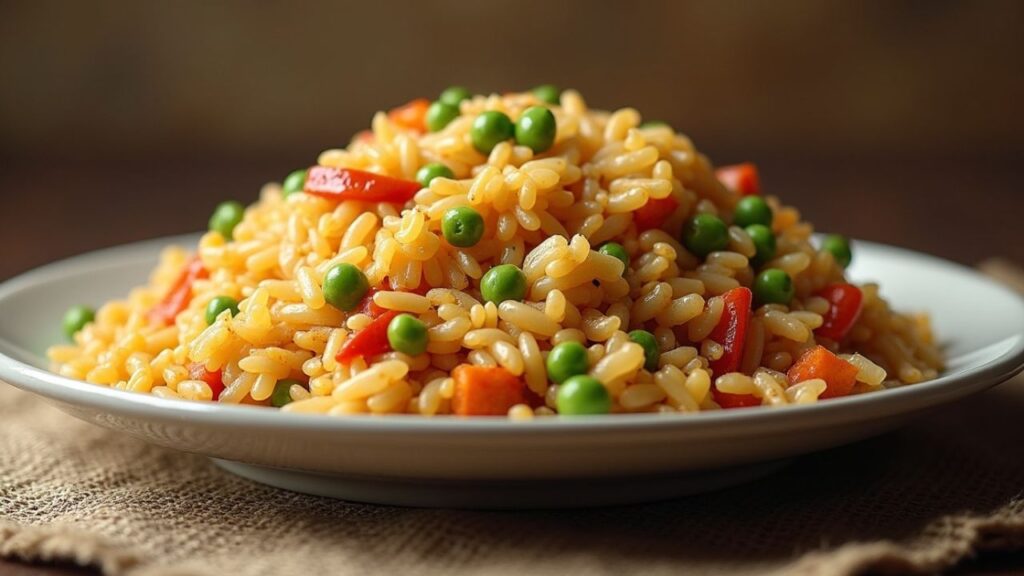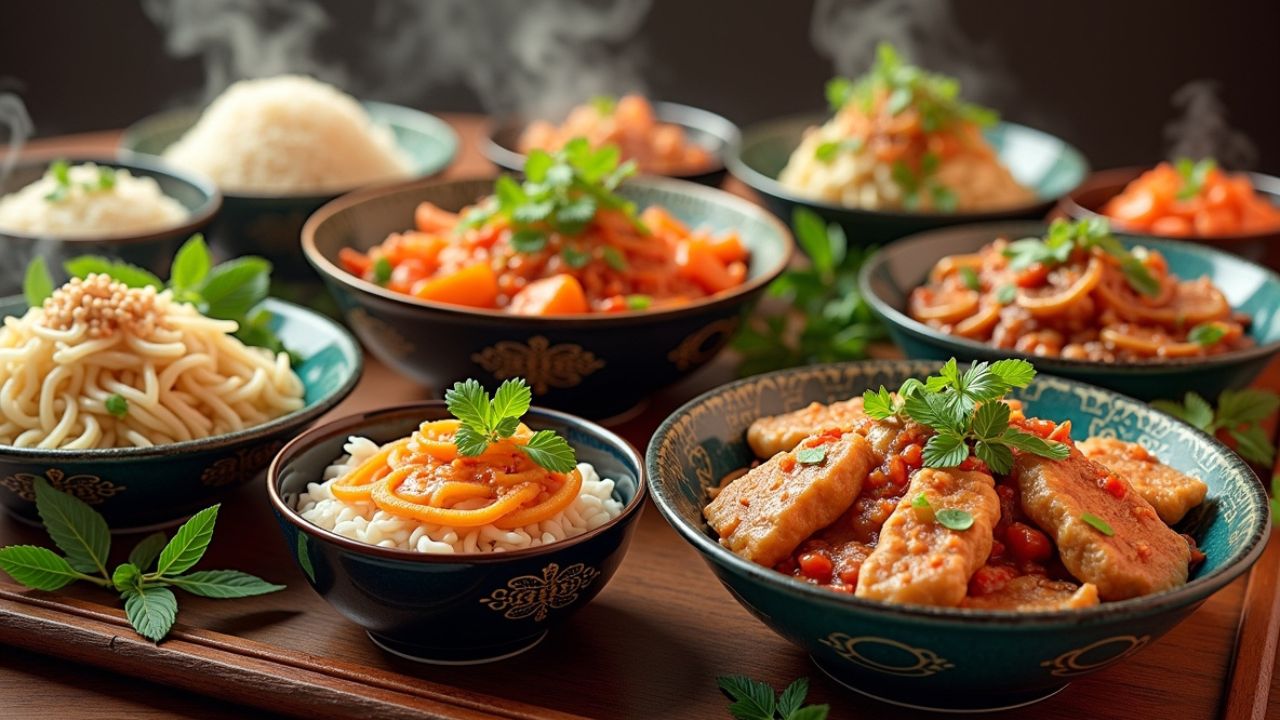Completely forget hard cooking! The simple menu with asian wok menu is the method of obtaining fast, fresh and very delicious food. Imagine a very hot skillet in crispy vegetables, tender meats and noodles that you can suck. This is a magic kitchen! Stir-fry is good, it does not stand alone however. A great wok menu should contain many different textures and tastes, such as smokey and charred snacks paired with sauce-rich and warming bowels. This is an excellent pan to use in busy restaurants or those who like cooking at home. It makes available a delectable world. Enough talking, now let us melt into it and learn how to create a fantastic wok based line up that no one will ever have enough of.

Wok Equipment Essentials
There is just no way to develop an outstanding Asian wok menu without suitable equipment! Obviously the star turns out to be the wok itself. The traditional carbon steel is the champ! It takes off in a blaze of glory, distributes the heat evenly and 6 months later, it gains a natural non-stick coating through oxidation (preferably left in a wooden cabinet or eat-in kitchen) (called seasoning). The ideal stir-frying effect is also achieved using a round-bottom wok and a gas burner surrounded by a ring all round, which is ideal to place on in a typical domestic stove, but flat-bottom woks are also compatible with a regular home stoves.
Do not miss robust wok spatula (chuan) with the bowl-shaped end to take up and flip, and deep ladle to use with sauces. Termed a spider (also fine-mesh strainer), it is ideal when pulling food out of hot oil or water quickly. With all these tools at your disposal, you will be able cook truly and satisfactorily with high-heat, getting all those collected textures effectually.
Mastering Wok Cooking Heat
What makes a dish great in every great Asian wok menu? strident heat which is controlled! It is not only simmering, moreover, it is the question of the wok hei that is the unusual, slightly smokey, wok breath flavor. To accomplish this, you must put the wok on a high heat first before adding oil (which must immediately begin to glimmer). Do not cook a lot of things at the point. Adding excessive items to the pan will reduce the temperature by a huge margin, and the vegetables will not be crisp-tender like they are expected to be. As the ingredients hit the pan, you should hear the loud sizzling. When that happens you know you have got it right on the heat.
Constantly stirring or tumbling ensures that whatever is cooking is well cooked and nothing burns. It is fast and transforms raw ingredients to colorful, restaurant caliber, and no longer than several minutes. With respect to the fire, your wok would bless you!
Stir Fry Sensation Dishes
Whenever anyone hears of Asian wok menus, what comes to their minds most of the time is stir-fries and there is a reason why this is so. They are fast, nutritious and there are a million choices of how to prepare them. Imagine colorful pepper, fresh cabbage, snap beans, and carrots combined with meat of your choice: chicken, beef, squid, tofu or tempeh with a thick mouth-watering sauce. Beef with Broccoli, Kung Pao Chicken or the basic Garlic Ginger Vegetable Stir-fry is loved by people. The most significant thing is to get everything ready. Cut and slice everything, mix the sauces and line up everything, before turning on the heat. Next, you will be able to get yourself a hot, satisfying supper that is bursting with freshness and vibrant color in the matter of a few minutes.
Noodle Wok Mastery Creations
Noodles and a steaming wok go along perfectly, and they make some of the best asian wok menu recipes. The wok’s high heat precisely charms and adds flavor to everything from thin vermicelli made of rice to hard udon or flexible egg noodles with sauce. The tangy-sweet tamarind fruit sauce and nuts in Pad Thai make it popular across the world. Chow’s Mein has crunchy fried noodles, whereas Pad See Ew has broad grains of rice in a sweet soy sauce that will make your mouth water. You also have to try Yaki Soba (Japanese stir-fry noodles) and Impaired Noodles (spicy Thai wide noodles). The method starts by boiling the noodles halfway, then quickly tossing them with sauce, vegetables, and protein in a wok over high heat to get that smokey finish that everyone loves.

Fried Rice Perfection Secrets
It is the best comfort meal, thus no Asian wok menu is complete without it! It’s a great way to make something amazing out of leftover rice and scraps of protein or vegetables. To get those somewhat crunchy, separate rice grains without mushiness, the wok needs to be quite hot. Day old rice kept in the fridge is perfect as it is not sticky. Classic Yangzhou Fried Rice usually contains shrimp, char siu pork, peas, and egg. Both Chicken Fried Rice or Vegetable Fried Rice is just as good. What are the magic steps? First, scramble the eggs and take them out. Then, stir-fry the other ingredients. Add the rice, breaking up any clumps, then add the egg and pour in your sauce (typically a basic combination of soy sauce, maybe oyster sauce, and sesame oil) for a fast toss to bring everything together.
Vibrant Veggie Wok Delights
Putting awesome vegetable dishes on your Asian wok menu is one good technique to have everyone satisfied. Cooking veggies using the wok is the best friend because it retains the color, the nutrition, and the great crunch. One of the traditional dishes is Buddha Pleasure, a mixture of vegetables and tofu, and some Dry-Fried Green Beans, which are burnt and securely upheaved with garlic and processed mustard greens to obtain flavour. Both are quite quick and delicious, ginger bok choy or simply stir-fried cabbage with oyster glaze (or mushroom dip as a vegan alternative). The natural sugars operate at high heat and give it the strong taste by caramelizing them.
To get protein you can marinade and stir-fry tofu, tempeh or seitan. Mushrooms also have a very good umami taste in food. These dishes demonstrate that preparing a meal based on a wok of vegetables is not boring at all. It is colorful, healthy and quite thick.
Protein Wok Showcase Stars
The wok is great for cooking proteins rapidly, which is a key part of any good Asian wok cuisine. You can quickly fry thinly sliced beef for meals such as Mongolian Beef or The Spice Steak. In traditional dishes like Commander Tso’s or Cashews Chicken, chicken breast or the thighs continue soft. Garlic: The shrimp species or Scallops using Snow Peas may be made in just a few minutes with shrimp or scallops. You can squeeze, cube, and make tofu crisp up really well. What’s the inducement? Velveting: marinating proteins (usually with cornstarch, soy sauce, while egg white or petroleum products) before quickly blanching them in oil or water and then completing them in the stir-fry. The reason for this Chinese method is to make sure that your meat dishes are always soft enough to melt in your mouth.
Signature Wok Sauce Magic
Which do all of your Asian wok dishes have in prevalent? ideal condiments! They make plain things taste better, which makes those crave-worthy. Some of you can accomplish anything if you know how to prepare simple sauces. The three most significant condiments are the following: sesame oil, oyster sauce and soy sauce (which is light for anger and dark for color and depth). The company cornstarch in water slurry, a solution of rice vinegar, hoisin, onions paste, or Sriracha will make the experience more tasty and thicker. The above Sweet and Tart, Teriyaki chicken, Black Bean, and Satay oils all have their own balance. Earlier you add the sauces to the pan, mix them up so they don’t stay together. Put them on the heated sides to the wok in order to develop and coat every aspect.

Crafting Your Winning Menu
To prepare a good wok meal, in an Asian sense, you must balance, make it attractive and do it right. Keep a plenty of different choices in every category, like many different stir-fries (mix amino acids and vegetables), 2-3 pasta choices (different kinds and flavours of noodles), simple fried rice and many good options with vegetables. Serving some new dishes, as well as a number of very popular favorites (e.g. Pad Thai and Kung Pao Chicken). Make it obvious what the spiciness levels are and what options are there to the customers with dieting restrictions (vegan, gluten-free with tamari). To ensure that your food functions well in the kitchen, make sure to cluster similar food into one area as well as share similar preparation like a garlicky ginger stir fry blend.
Prepare the ingredients to make it easier to cook the food at a short notice. A well ordered wok menu provides the consumers with numerous options and ensures that the consumers receive quality food at a high speed each time.
Difference Table
| Feature | Stir-Fry Stars 🔥 | Noodle Nirvana 🍜 | Fried Rice Perfection 🍚 | Veggie Vibes 🌱 |
| Core Focus | Speed & Freshness | Noodle Texture & Sauce Embrace | Transforming Leftovers | Color, Crunch & Natural Sweetness |
| Flavor Factor | Intense “wok hei” (smoky breath) | Smoky char + Sauce infusion | Savory, comforting umami | Caramelized, bright, clean |
| Texture Key | Crisp-tender veggies, juicy protein | Chewy, springy, or slippery | Separate, slightly crispy grains | Snappy, vibrant, satisfying crunch |
| Best For | Lightning-fast healthy meals | Hearty, slurp-worthy bowls | Ultimate comfort & resourcefulness | Plant-powered brilliance & sides |
| Prep Secret | Mise en place (everything ready!) | Par-cook noodles first | Use day-old, cold rice! | High heat = less sogginess |
| Signature Trick | Screaming hot wok, small batches | Quick high-heat finish toss | Cook egg first, then combine | Blistering for depth (e.g., green beans) |
| Slurpability | Low (fork/chopstick friendly) | MAXIMUM SLURP! | Moderate (spoon-friendly) | High (fresh & juicy) |
| Menu Must-Have | Kung Pao Chicken, Garlic Ginger Veg | Pad Thai, Chow Mein, Yaki Soba | Yangzhou, Chicken, Veggie | Buddha’s Delight, Dry-Fried Beans |
Conclusion
In this Asian wok menu, there is a journey in color thorough texture and flavor. All you need to know how to work with the heat, tools, and techniques to cook fast, nutritious and delicious food. The number of alternatives is impressive, ranging between smokey noodles and spicy stir-fries to comfort and vegetable fried rice snacks. Experience the magic of work and start heating up tomorrow!
FAQ’s
1. What’s the BEST wok to use?
The best choice is a conventional stainless steel wok! They heat up really quickly, disperse heat uniformly, and with time they get a natural sticky surface. Natural gas works best in round-bottom woks, although flat-bottom works function well with domestic stoves.
2. What’s “wok hei”?
A direct translation of “wok hei” would be “to flow out the word skillet.” That’s the great, somewhat smokey taste you get in stir-fried at eating establishments. The key is to cook quickly over very high temperatures without crowding the pan.
3. How do I make stir-fry NOT soggy?
The preparation is the most important! You should cut everything up before you heat the wok. Heat the wok very hot, cook in small quantities (don t stuff it up) and keep it in motion. Once you find yourself making a soggy stir-fry, it usually means that you did not bring your stir-fry up high enough or you added too many ingredients at the same time.
4. What noodles work BEST in a wok?
A lot of noodles are shiny! Every aspect of these noodles are great: thin noodles made from rice (Pad Thai), chewy udon, bouncy egg pasta ( Chou Mein), and broad rice noodles (Pad See Ew). First, partially fry them, then rapidly finish these individuals in the hot pan with a dressing.
5. Why use OLD rice for fried rice?
Rice that has been in the fridge for a day is drier and not as clinging to. This enables the hot wok crisp up each grain just so, so your fried rice does not turn to a soft mess. Rice that has just been cooked boils rather than fries!
